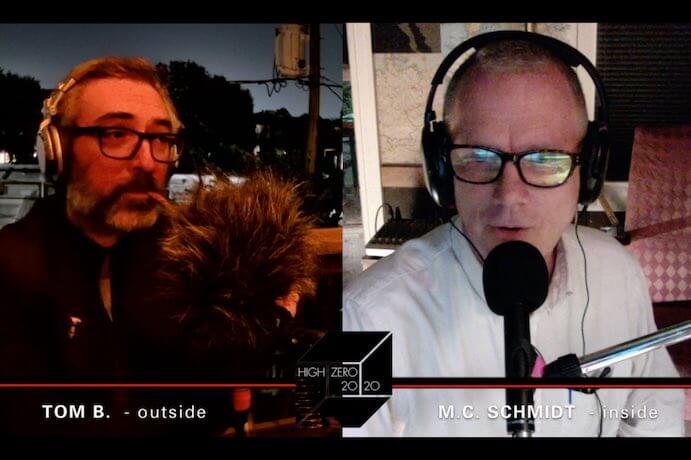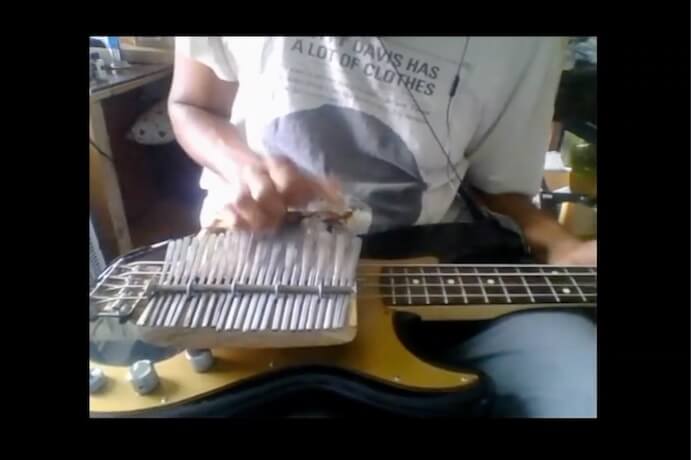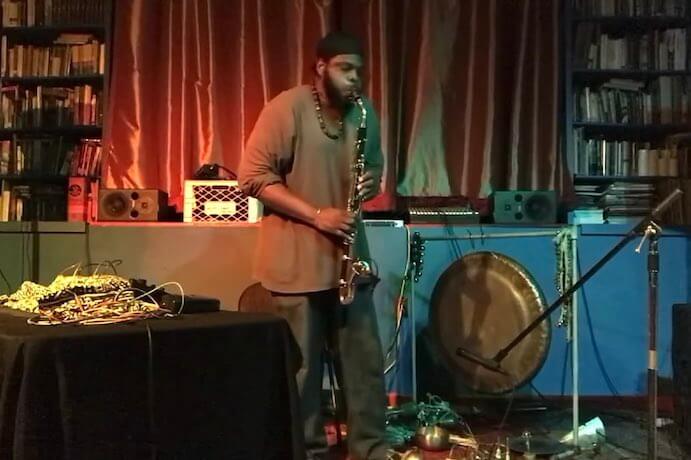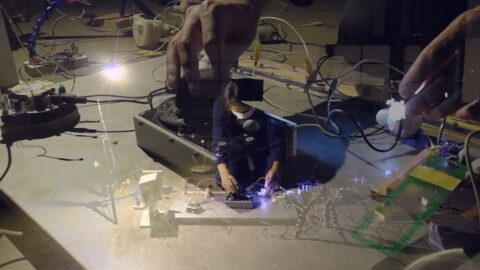“No, no, no, NO, NO!” began M. C. Schmidt, acting president of Baltimore’s High Zero Foundation. “This is High Zero; this is freak Christmas!” he continued, intentionally talking over Tom Boram, who had begun to verbally lament the current state of world events. As co-mediators of the 2020 High Zero Festival, the two spoke from a split-screen on the foundation’s Twitch channel, on which the festival was streamed exclusively from September 24 through 27.
Boram’s impulse to decry the state of domestic and global affairs was, of course, not without context. This year’s festival (High Zero’s twenty-second) had to be curated online in response to the global Coronavirus pandemic that has mortally wounded the delicate economy of live music in America. Indeed, High Zero’s mission to provide a forum for freely and spontaneously improvised music did feel slightly betrayed by the format. Pre-recorded sets and the cold, glass barrier imposed by whatever screen audiences had available for viewing were unfortunate compromises to the communion of creative energy normally associated with this type of music making. What might have been lost by the subjectivity of one’s at-home setup (whether a smartphone with earbuds or a hi-fi home theater) is likely immeasurable. Along these lines, our hosts continually acknowledged that being there is an indispensable part of the experience. To emphasize this sentiment, Schmidt offered a rather poetic metaphor for the process of improvisation: a group of individuals begins by wading into a river. Each decides they will try to make interesting shapes with the moving water. The individuals then must determine what the others around them are doing only by observing the motion of the water as it passes by.

Schmidt’s insistence on keeping the commentary alive with this type of imagery ultimately served to recenter the needle on the joy and hope that High Zero provides to some of the most creative and unique noisemakers at work today, regardless of the current constraints. The safe space that High Zero curates normalizes what society’s training has unfairly labeled as unusual or abnormal, continually moving the phantom line that separates noise from music and abstraction from art. This blurring of lines is driven by High Zero’s excellent roster of performers and artists, a broadly inclusive collage of creative individuals.
Every aspect of the festival’s production was appealing, from the stylish graphic design and video production to the quirky banter that Schmidt and Boram exchanged between performances. A unique aspect of the setup was the chat window, within which those in attendance could provide virtual applause in praise of consistently excellent performances.
Broadcast from a different city each night, artists and ensembles joined from Chicago, Santa Fe, Baltimore, and Seattle. A selection of video artworks were commissioned to conclude each night, ranging from kaleidoscopic visualizations to highly conceptual installation-style works.

From Chicago, Alejandro Acierto and Luke Stewart’s solo pieces showed tight perspectives of each artist’s hands at work. Stewart’s remarkable shredding on the bass guitar garnered a fitting reaction from emcee Tom Boram, who said, “Normal people can’t do that, Luke doesn’t do normal people stuff.”
Santa Fe introduced more dynamic video production with multiple cameras covering an ensemble piece featuring Raven Chacon (guitar, electronics), Carlos Santistevan (upright bass, electronics) and Tatsuya Nakatani (extended percussion), in addition to a solo vocal performance by Marisa DeMarco (Bigawatt). In contrast, Baltimorean Jamal Moore joined the New Mexico mix with his solo before a single camera in a library cluttered with electronics and percussion instruments.

Baltimore’s ensemble piece with Neroj Patrick (bass), Shelly Purdy (percussion), Duncan Moore (electronics) and Susan Alcorn (pedal steel guitar) added further dynamism to the multi-camera approach with compelling live video processing by Sue-C (Susan Slagel). Lucas Yasunaga’s ‘ecosystem of synthetic animals’ seemed to allow the electronics to take over as little, hand crafted machines darted around the performance space making music as they interacted with one another. Special mention goes to Timothy Nohe’s stunning video piece in which two candles suspended in darkness teetered back and forth as they burned at both ends. As they melted, the percussive dripping created a kind of music that mounted in urgency until they both abruptly dropped from the stage.
Seattle beamed in on Sunday to close the festival, with a Don Cherry-esque ensemble piece featuring Jim Knodle, Casey Adams, Heather Bentley (viola), Evan Woodle (percussion) and Jenny Ziefel (clarinet, saxophone). In the end, however, it was another Baltimorean thrown in the mix, Allison Clendaniel, who largely stole the show with a remarkable display of vocalizations and live electronics.

An advantage to streaming is the fact that High Zero’s entire audience (averaging around 140 people per night) could tune in and enjoy the entire festival. In years past, the festival was distributed across its various locations, allowing only for local attendance. It is of course everyone’s hope that the performing arts may resume in person soon, though perhaps when it does, it will include what we’ve learned about the potential of live streaming. Until then, High Zero has made a great example of how engaging and inspiring the virtual format can be.
I CARE IF YOU LISTEN is a program of the American Composers Forum, funded with generous donor and institutional support. A gift to ACF helps support the work of ICIYL. Editorial decisions are made at the sole discretion of the editor-in-chief. For more on ACF, visit the “At ACF” section or composersforum.org.
























